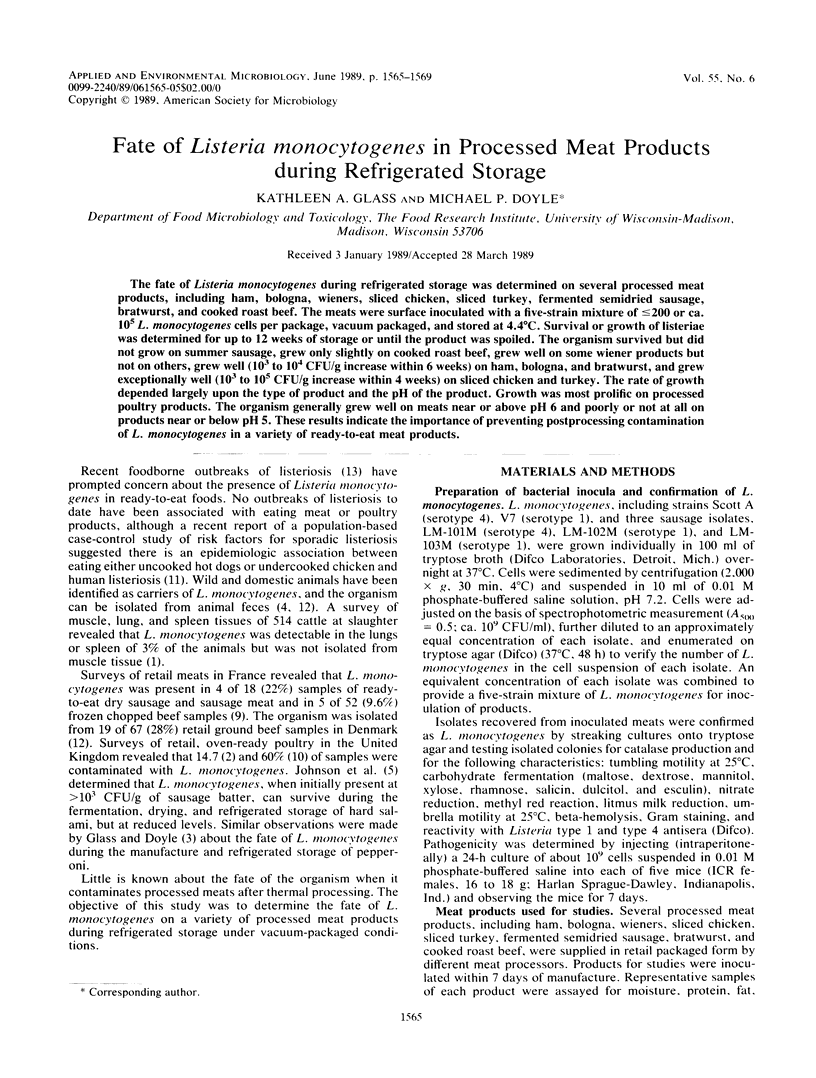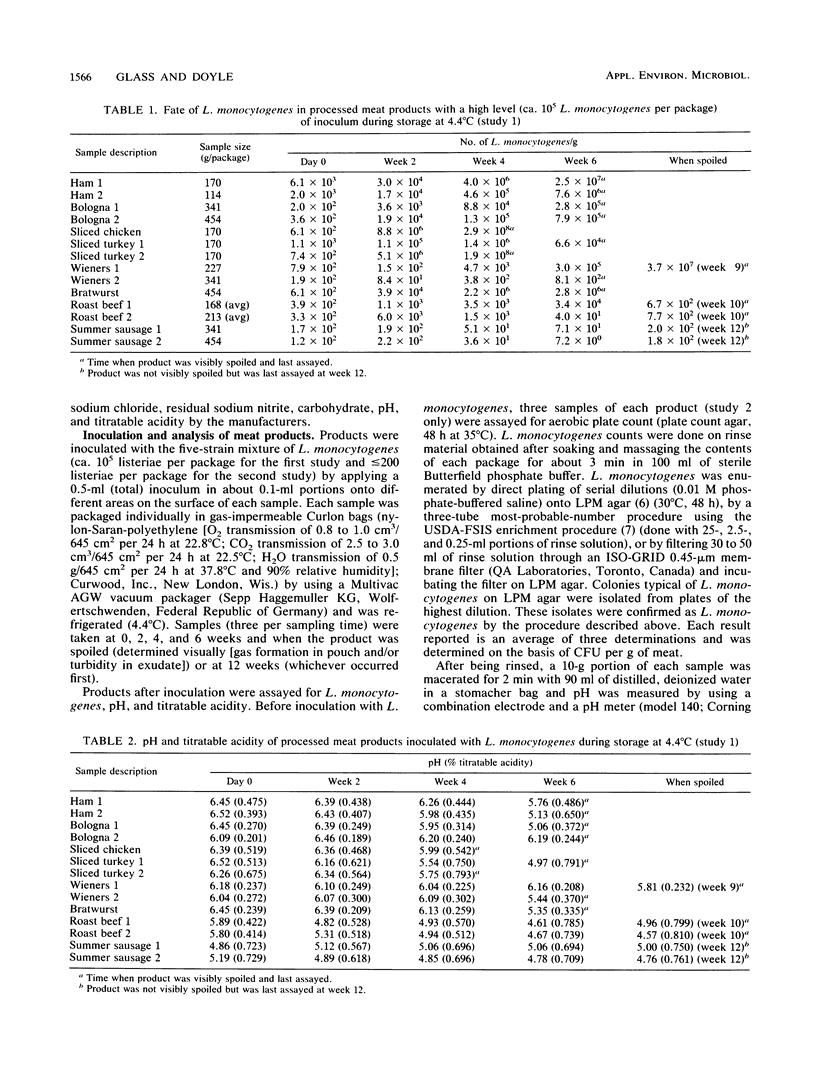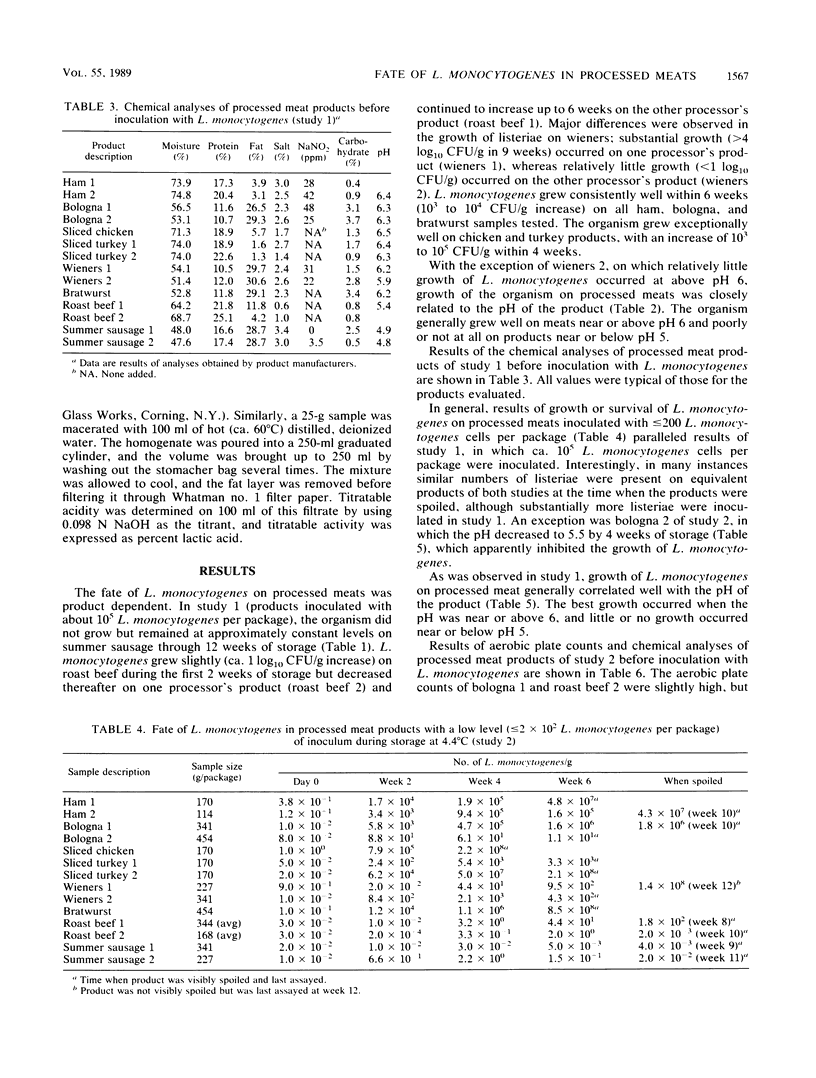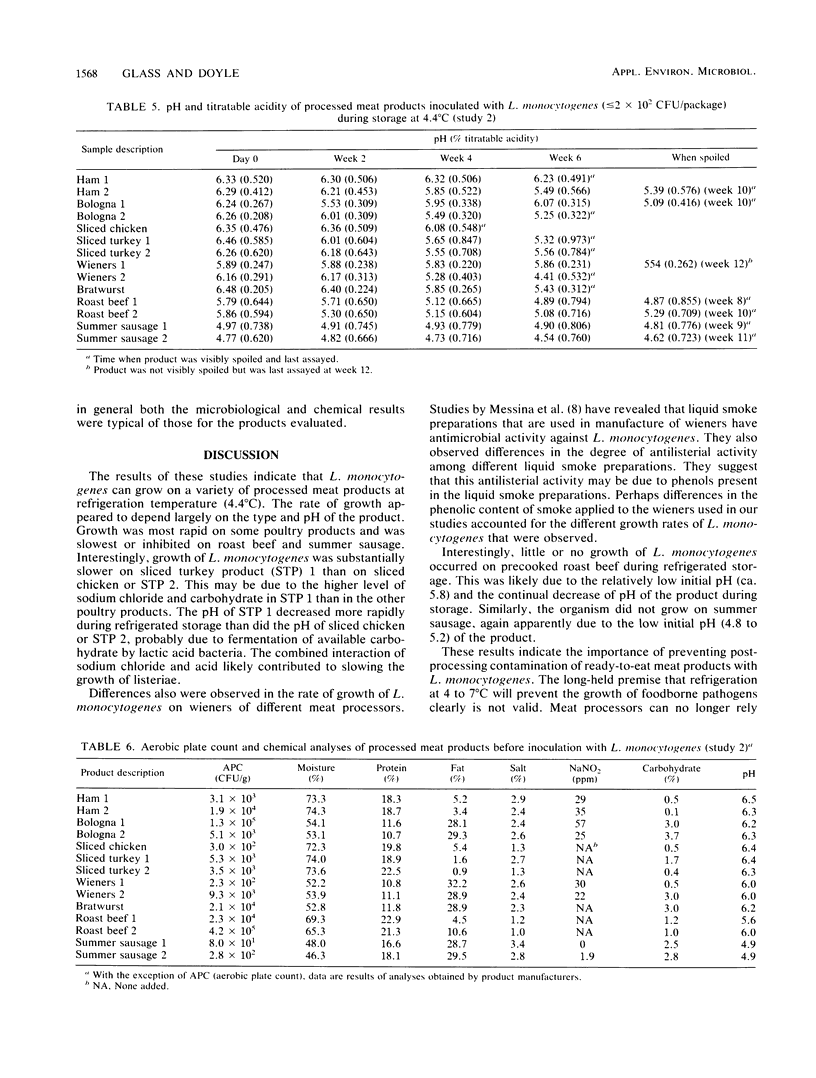Abstract
The fate of Listeria monocytogenes during refrigerated storage was determined on several processed meat products, including ham, bologna, wieners, sliced chicken, sliced turkey, fermented semidried sausage, bratwurst, and cooked roast beef. The meats were surface inoculated with a five-strain mixture of less than or equal to 200 or ca. 10(5) L. monocytogenes cells per package, vacuum packaged, and stored at 4.4 degrees C. Survival or growth of listeriae was determined for up to 12 weeks of storage or until the product was spoiled. The organism survived but did not grow on summer sausage, grew only slightly on cooked roast beef, grew well on some wiener products but not on others, grew well (10(3) to 10(5) CFU/g increase within 4 weeks) on ham, bologna, and bratwurst, and grew exceptionally well (10(3) to 10(5) CFU/g increase within 4 weeks) on sliced chicken and turkey. The rate of growth depended largely upon the type of product and the pH of the product. Growth was most prolific on processed poultry products. The organism generally grew well on meats near or above pH 6 and poorly or not at all on products near or below pH 5. These results indicate the importance of preventing postprocessing contamination of L. monocytogenes in a variety of ready-to-eat meat products.
Full text
PDF




Selected References
These references are in PubMed. This may not be the complete list of references from this article.
- Gitter M. Listeria monocytogenes in "oven-ready" poultry. Vet Rec. 1976 Oct 23;99(17):336–336. doi: 10.1136/vr.99.17.336. [DOI] [PubMed] [Google Scholar]
- Gray M. L., Killinger A. H. Listeria monocytogenes and listeric infections. Bacteriol Rev. 1966 Jun;30(2):309–382. doi: 10.1128/br.30.2.309-382.1966. [DOI] [PMC free article] [PubMed] [Google Scholar]
- Johnson J. L., Doyle M. P., Cassens R. G., Schoeni J. L. Fate of Listeria monocytogenes in tissues of experimentally infected cattle and in hard salami. Appl Environ Microbiol. 1988 Feb;54(2):497–501. doi: 10.1128/aem.54.2.497-501.1988. [DOI] [PMC free article] [PubMed] [Google Scholar]
- Lee W. H., McClain D. Improved Listeria monocytogenes selective agar. Appl Environ Microbiol. 1986 Nov;52(5):1215–1217. doi: 10.1128/aem.52.5.1215-1217.1986. [DOI] [PMC free article] [PubMed] [Google Scholar]
- McClain D., Lee W. H. Development of USDA-FSIS method for isolation of Listeria monocytogenes from raw meat and poultry. J Assoc Off Anal Chem. 1988 May-Jun;71(3):660–664. [PubMed] [Google Scholar]
- Pini P. N., Gilbert R. J. The occurrence in the U.K. of Listeria species in raw chickens and soft cheeses. Int J Food Microbiol. 1988 Jun;6(4):317–326. doi: 10.1016/0168-1605(88)90025-6. [DOI] [PubMed] [Google Scholar]
- Schwartz B., Ciesielski C. A., Broome C. V., Gaventa S., Brown G. R., Gellin B. G., Hightower A. W., Mascola L. Association of sporadic listeriosis with consumption of uncooked hot dogs and undercooked chicken. Lancet. 1988 Oct 1;2(8614):779–782. doi: 10.1016/s0140-6736(88)92425-7. [DOI] [PubMed] [Google Scholar]
- Skovgaard N., Morgen C. A. Detection of Listeria spp. in faeces from animals, in feeds, and in raw foods of animal origin. Int J Food Microbiol. 1988 May;6(3):229–242. doi: 10.1016/0168-1605(88)90015-3. [DOI] [PubMed] [Google Scholar]


